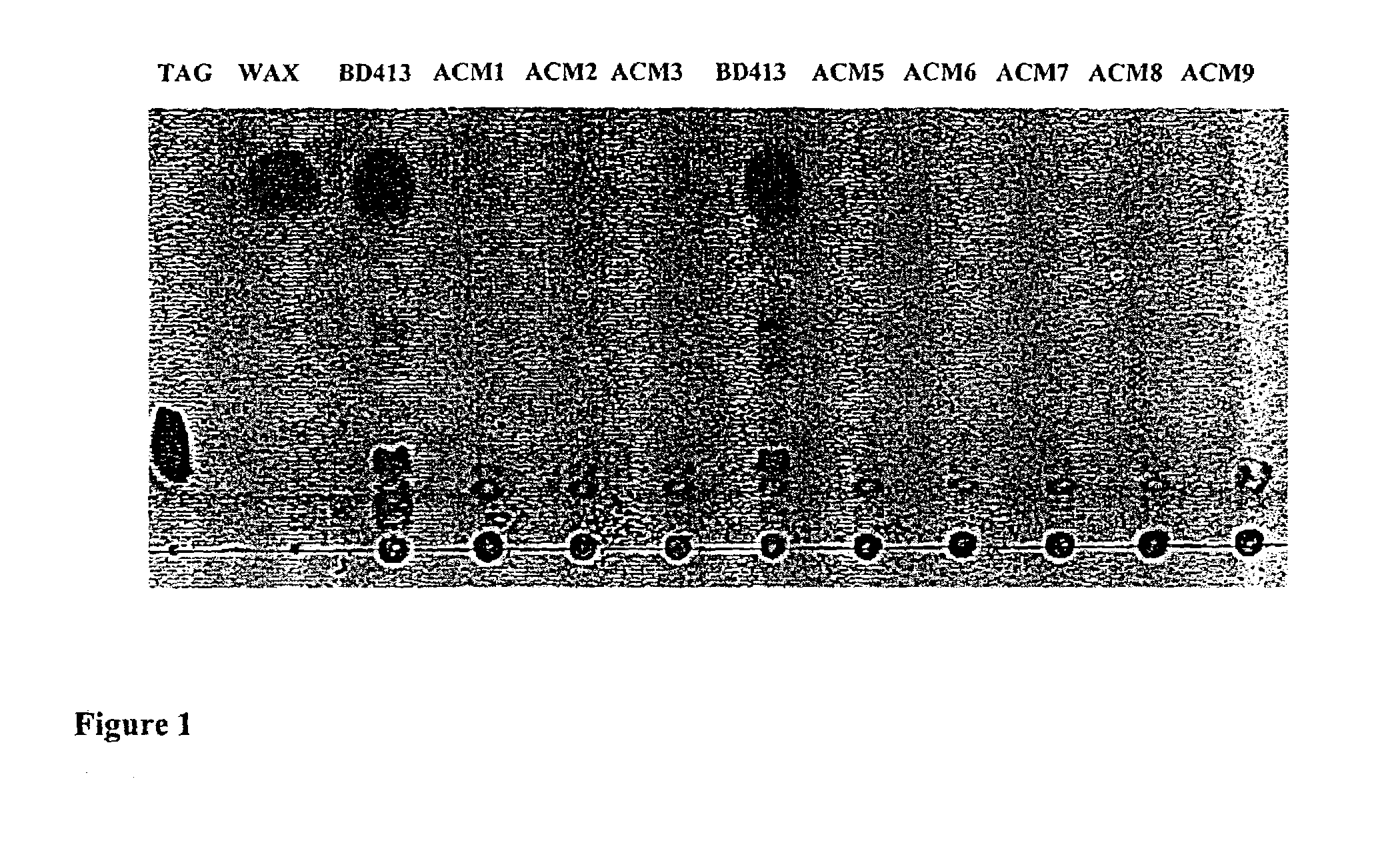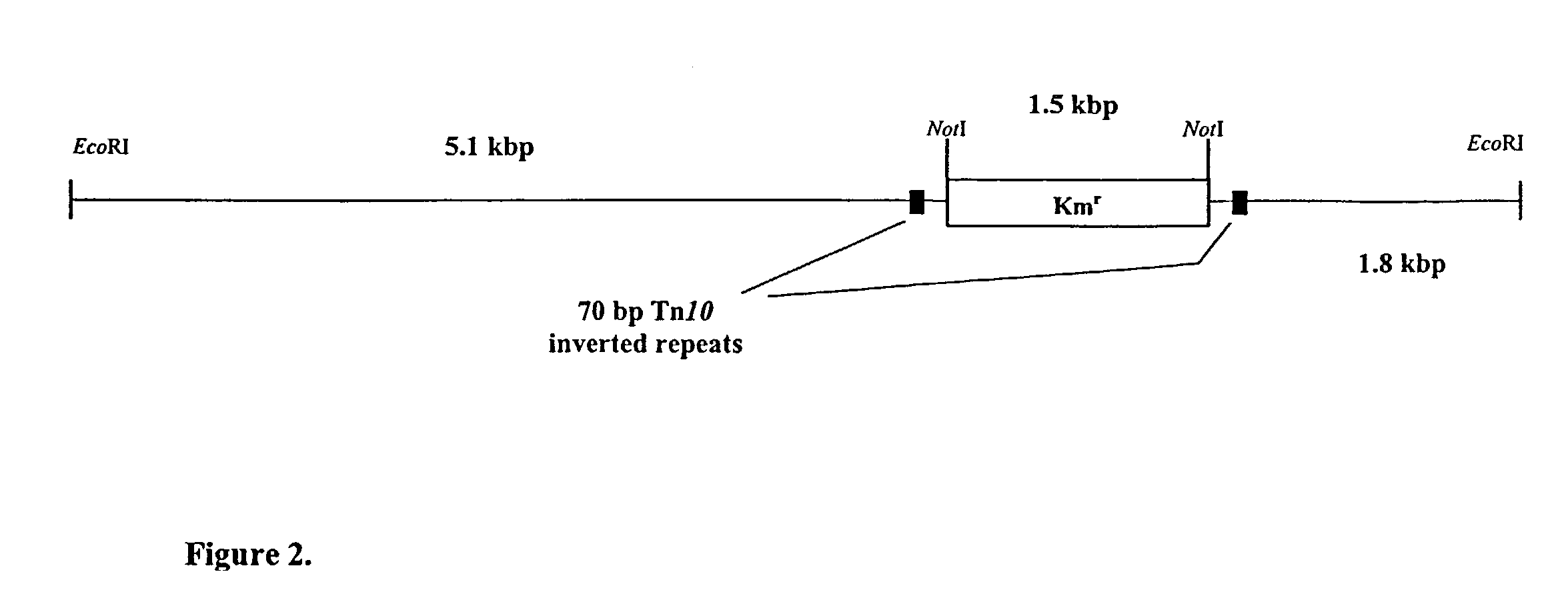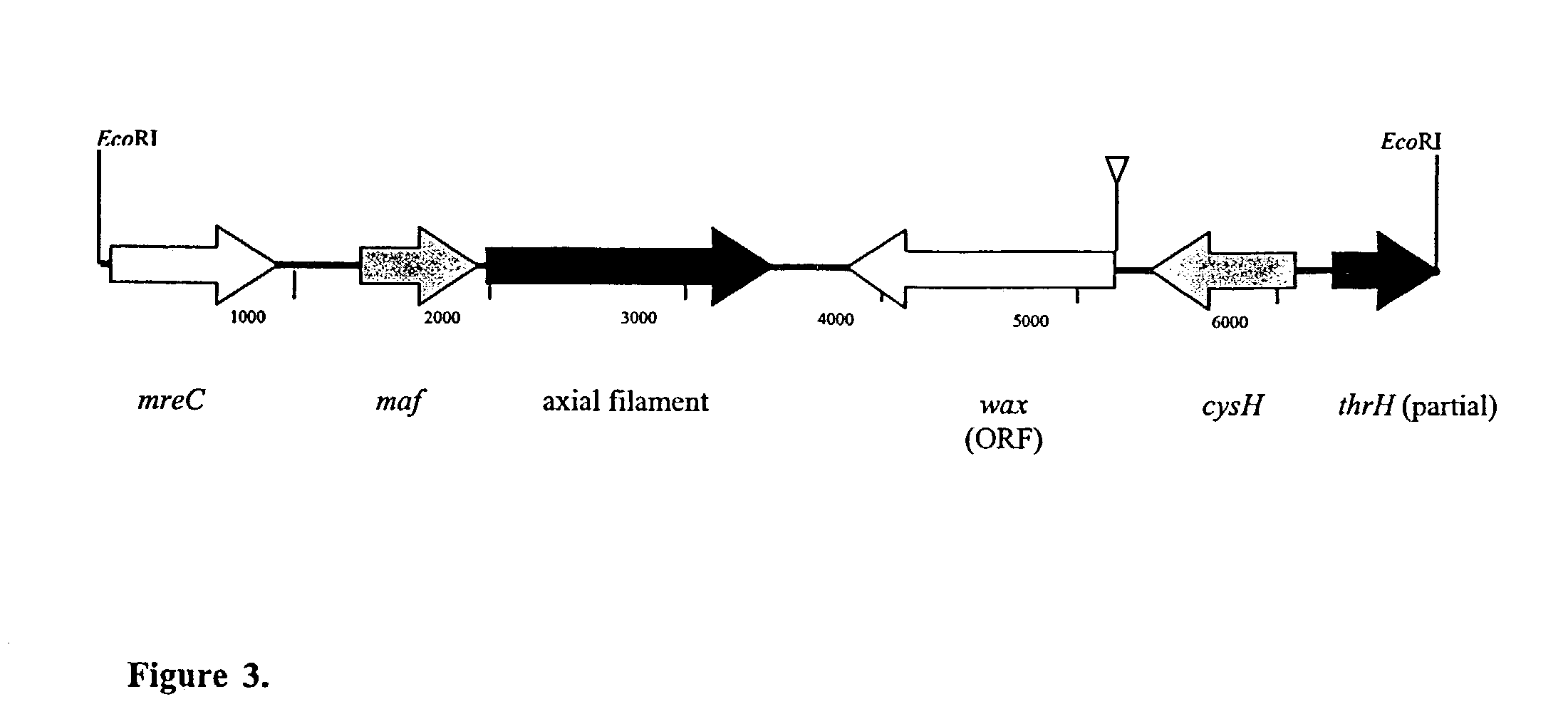Methods and compositions for modification of lipid biosynthesis
a technology of lipid biosynthesis and composition, which is applied in the direction of enzymology, organic chemistry, transferases, etc., can solve the problems of low yield of jojoba plant, low utilization rate of wax ester from these bacterial sources, and relatively high oil price, so as to increase the wax ester content of the host cell
- Summary
- Abstract
- Description
- Claims
- Application Information
AI Technical Summary
Benefits of technology
Problems solved by technology
Method used
Image
Examples
example 1
Materials and Methods
[0091]A. Bacterial Strains, Plasmids, Media and Growth Conditions
[0092]The bacterial strains and plasmids used in this study are listed in Table 1. Cells of A. calcoaceticus were cultivated aerobically in Luria-Bertani (LB) medium. (Sambrook et al., 2001) in Erlenmeyer flasks without baffles at 30° C. For the induction of wax ester formation cells were cultivated in mineral salts medium (MSM) (Schlegel et al., 1961) with 0.1 g 1−1 NH4Cl and 1% (w / v) sodium gluconate as carbon source. These culture conditions are referred to as “storage conditions”. Cells of E. coli were grown at 37° C. in LB medium. P. citronellolis was cultivated in LB medium at 30° C. Solidified media contained 1.8% (w / v) agar. Antibiotics were added at the following concentrations if appropriate: ampicillin (Ap) 75 μg ml−1, nalidixic acid (Ndx) 10 μg ml−1, kanamycin (Km) 50 μg ml−1, tetracycline (Tc) 12.5 μg ml−1.
[0093]
TABLE 1Bacterial strains and plasmids used in this studyBacterial strainor...
example 2
Results
[0122]A. Isolation of Wax-Negative (Wax) Mutants of A. calcoaceticus BD413 (Ndxr)
[0123]Transposon mutagenesis of an isolated spontaneous Ndx-resistant strain of A. calcoaceticus BD413 was performed to obtain mutants affected in the accumulation of wax esters. A total of 4000 miniTn10Km-induced mutants were obtained and screened by Sudan Black B staining for mutants with a reduced or lacking accumulation of storage lipids. Eight mutants were isolated exhibiting a lighter staining with the lipophilic dye Sudan Black B. TLC analysis of these mutants revealed that all of them were unable to accumulate wax esters under storage conditions but were still able to accumulate triacylglycerols (TAGS) to some extent (FIG. 1). These wax mutants were designated ACM for Acinetobacter calcoaceticus mutants.
[0124]B. Molecular Characterization of miniTn10Km-Induced Mutants Defective in Wax Esteraccumulation
[0125]To map the insertions of miniTn10Km in these mutants, EcoRI fragments, which confe...
example 3
The Wax Gene Encodes a Bifunctional WS / DGAT
[0137]Wild-type A. calcoaceticus ADP1 exhibited a WS activity of 90.37 pmol (mg min)−1 and a ca. tenfold lower DGAT activity (Table 4), which corresponded approximately with the amounts of wax esters and TAGs accumulated under storage conditions as estimated by TLC. Inactivation of wax / dgat not only caused the loss of the ability for wax ester and TAG biosynthesis; it also abolished WS and DGAT activity in the transposon-induced mutant as well as in the knock-out mutant (Table 4).
[0138]
TABLE 4Shows WS and DGAT activities in crude cell extracts of different strains.Values are averages of at least three independent studies.WS activityDGAT activityStrainPlasmid[pmol (mg min)−1][pmol (mg min)−1]A. calcoaceticusADP190.377.96ACM70.200.11ADP1wax / dgat0.650.17ΩKmE. coliXL1-BluepBluescript KS−0.110.11pKS: wax / dgat84.519.37pBluescript SK−0.100.10pSK: wdh32690.650.31S17-1pBBRIMCS-20.110.10pBBRIMCS-2: wax / dgat99.2025.03P. citronellolispBBRIMCS-20.100.10...
PUM
| Property | Measurement | Unit |
|---|---|---|
| Temperature | aaaaa | aaaaa |
| Fraction | aaaaa | aaaaa |
| Mass | aaaaa | aaaaa |
Abstract
Description
Claims
Application Information
 Login to View More
Login to View More - R&D
- Intellectual Property
- Life Sciences
- Materials
- Tech Scout
- Unparalleled Data Quality
- Higher Quality Content
- 60% Fewer Hallucinations
Browse by: Latest US Patents, China's latest patents, Technical Efficacy Thesaurus, Application Domain, Technology Topic, Popular Technical Reports.
© 2025 PatSnap. All rights reserved.Legal|Privacy policy|Modern Slavery Act Transparency Statement|Sitemap|About US| Contact US: help@patsnap.com



